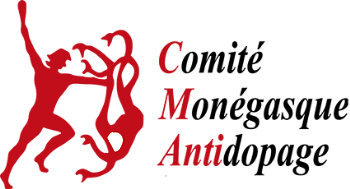By putting the individual at the center of his concerns, our era has dedicated time to performance, efficiency and differentiation. At work, in our daily life, in sport, the overcoming of oneself has become, over the years, a cardinal value. It is also that, the digital age, the era of the number: everything is counted, weighed and weighed, measured. And from measure to comparison, there is only a small step, briskly crossed. Mechanically, when two things are compared, one of them is in a position of inferiority over the other, in failure. Overcoming of oneself, fear of failure, fear of non-integration … the temptation is so great to use illusory safeguards in order to stay on this thread stretched over the precipice that is forming a growing gap as time goes by, with a lot of modern myths or financial stakes out of all proportion. How, while techniques have never been so advanced and methods so effective, protect young athletes against doping? How to identify doping behaviors? Which signals should trigger alarms?
THE FIRST INDICATIONS
Whether we are a doctor, a coach or simply a parent, the first indications can seem anecdotal. This can be a request for a food supplement to manage the stress of an exam or the anxiety of a future public speaking or the use of a drug to combat school or work-related fatigue. These seemingly minor patterns of behaviors must draw attention. We must take advantage of the moments of questioning and discussion to talk again about daily sports practice and address the important issue of substances (food supplements, drugs, etc.) consumed in sport. It must always be borne in mind that it is mainly medical prescriptions diverted from their primary use (corticosteroids, beta-blockers, anxiolytics, sildenafil, anabolic agents, beta-2 agonists, diuretics, narcotics, etc.) which are at the root of first unacceptable doping behaviors.
DOPING BEHAVIORS AND DOPING
Doping behavior occurs when a product (vitamin, nutrient, narcotic, drug, etc.) is used to overcome a barrier, real or imagined, at school, university, work or home.
Doping, for its part, only concerns athletes who, in the context of their practice, whether in competition, in an event or during their training, use substances or methods included on the list drawn up by the World Anti-Doping Agency (WADA). This is, without special dispensation, a prohibited practice.
THE KEY FACTORS
Gender
On average, boys are more familiar with doping behaviors than girls. However, they consume more vitamins and / or drugs to improve their academic performance or intellectual abilities than their male counterparts. The latter, on the other hand, are much more focused on sports doping and on improving physical performance.
Age
Stress
Lack of confidence, poor self-esteem or latent anxiety can reveal difficulties in coping with obstacles in daily life or some deadlines and lead to doping behaviors. The lack of preparation for failure or too much pressure, especially parental pressure, can also be a stress factor.
Lack of support
Loneliness
Taste of the Forbidden
Social isolation
Encouragement
Relentless pursuit of performance
Intellectual abilities
Declare having used, at least once, products to improve their intellectual performance.
Physical abilities
Declare having used, at least once, products to improve their physical performance.
WHAT TO DO?
Awareness of the risks and attention to the indications we have just mentioned are already decisive steps on the road to prevention. The dialogue, the awareness of the athlete, the understanding of his problems, the learning of failure, the establishment of a happy and lasting relationship with his entourage, his managers, his teammates and friends, the awareness of health risks, the continuous and peaceful communication, the watchful eye and the respect for performance can reduce the risks of doping as much as possible.
Even if adolescence is a storm and stress period, during which teenagers experience problems, these issues need to be addressed. If you have any fears, questions, doubts, or if you need any help, feel free to contact us. The Monegasque Anti-Doping Committee is there to prevent, assist and advise, well before punishing and sanctioning.

